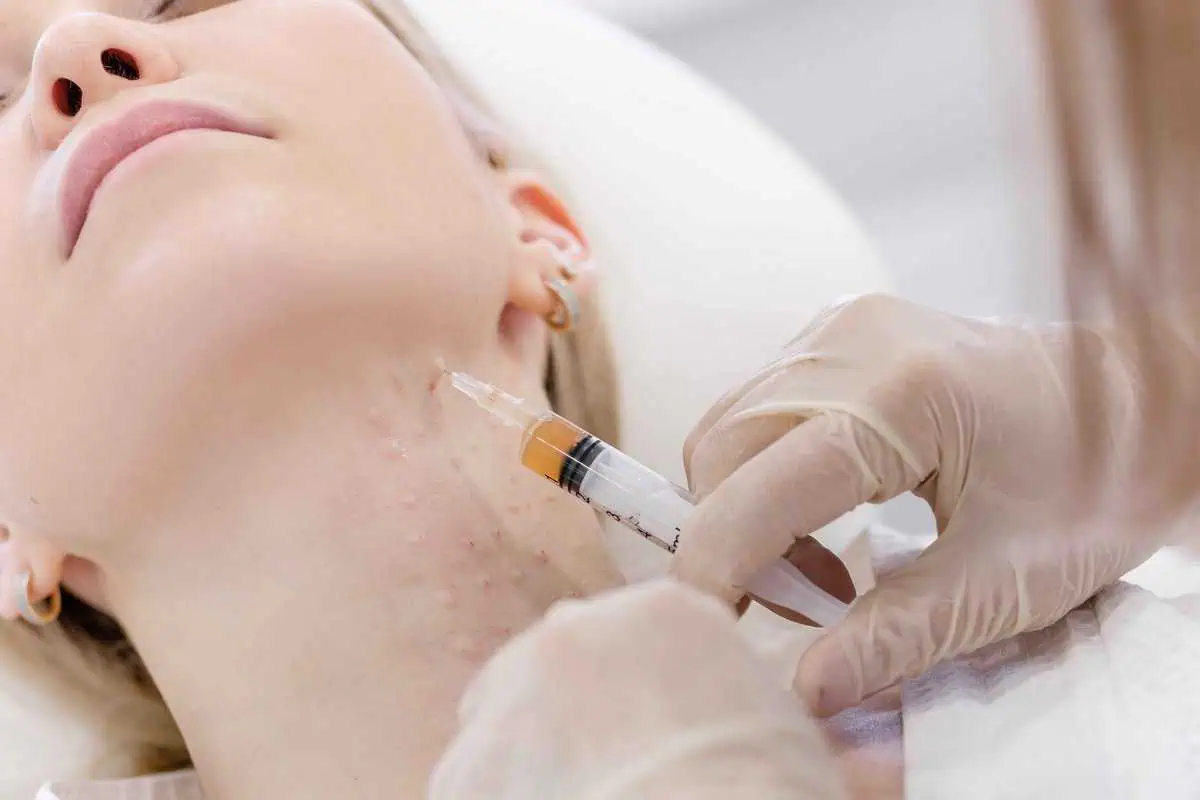Introduction
Intense Pulsed Light (IPL) has recently become a popular non-invasive cosmetic treatment. It is an effective method for improving the appearance of various skin concerns, such as hyperpigmentation, fine lines and wrinkles, and vascular lesions. IPL emits high-intensity pulses of broad-spectrum light that penetrate deep into the skin, causing collagen production and other changes. This blog will explore all aspects of IPL, including how it works, its benefits, and the risks and side effects associated with the treatment. We will also discuss the preparation required before an IPL session, the procedure, and the aftercare necessary to maintain optimal results. If you are considering IPL or are just curious about this popular cosmetic treatment, this guide will provide you with all the information you need to make an informed decision. So, let’s dive in and learn everything there is to know about Intense Pulsed Light!
Understanding IPL
How IPL works
Intense Pulsed Light (IPL) uses a broad spectrum of wavelengths to penetrate the skin’s surface and target specific skin concerns. The light energy is absorbed by pigmented areas, such as age spots or freckles, and converted to heat, which destroys the pigment. It also stimulates collagen production, improving skin texture and tone, reducing fine lines and wrinkles, and increasing skin firmness.
IPL vs. Laser Treatments
While IPL and laser treatments use light energy to treat the skin, they work differently. Lasers use a single wavelength of light to target specific areas, while IPL uses a broad spectrum of wavelengths to treat a larger surface area. IPL is typically used for treating pigmented spots, redness, and fine lines, while lasers are more effective for treating specific concerns like acne scars or tattoo removal.
Different types of IPL machines
Various IPL machines, including those that use intense pulsed light alone or combined with radiofrequency energy, are available. Each machine has different settings and parameters that can be adjusted based on the individual’s skin type and the treatment condition.
Benefits of IPL Treatment
Improved skin texture and tone
IPL treatment can improve skin texture and tone by reducing the appearance of fine lines, wrinkles, and age spots. It can also help reduce the appearance of acne scars and improve overall skin clarity.
Reduction of unwanted hair
IPL treatment can also be used to reduce the growth of unwanted hair. The light energy from the IPL device targets the pigment in the hair follicles, reducing their ability to grow new hair.
Reduction of vascular lesions
IPL can also treat vascular lesions like spider veins and broken capillaries. The light energy from the IPL device targets the blood vessels, causing them to collapse and eventually fade from view.
Minimal downtime
IPL treatment typically requires little to no downtime, allowing you to return to normal activities immediately following treatment. Any redness or swelling usually subsides within a few hours to a day.
Long-lasting results
While IPL treatment may require several sessions to achieve optimal results, the results are long-lasting. With proper post-treatment care and maintenance, the results of IPL treatment can last for several years.
Non-invasive
IPL treatment is a non-invasive alternative to more invasive procedures, such as laser resurfacing or surgical facelifts. It can achieve similar results without incisions or lengthy recovery periods.
Risks and Side Effects of IPL
While IPL is generally a safe and effective treatment, it does carry some risks and potential side effects. It’s important to discuss these with your provider before undergoing treatment.
Skin irritation
After IPL treatment, the skin may be red and slightly swollen. This is normal and should subside within a few hours to a day. In rare cases, skin irritation can be more severe, causing blistering or scabbing.
Hyperpigmentation
IPL targets pigmented areas, but in some cases, it can cause hyperpigmentation or darkening of the skin. This is more common in those with darker skin tones.
Hypopigmentation
Hypopigmentation, or skin lightening, can occur after IPL treatment. This is more common in those with lighter skin tones.
Eye damage
IPL emits bright flashes of light that can harm the eyes. Eye protection is required during treatment to prevent damage to the eyes.
Infection
In rare cases, IPL can cause an infection. It’s important to follow post-treatment instructions carefully to prevent infection.
Scarring
While rare, scarring can occur after IPL treatment. This is more likely to occur if the skin needs to be adequately cared for after treatment or if the treatment is performed incorrectly.
Preparing for IPL Treatment
Consultation with a provider
Before undergoing IPL treatment, scheduling a consultation with a qualified provider is important. During the Consultation, the provider will assess your skin type and condition and determine if IPL suits you.
Avoiding sun exposure
It’s essential to avoid sun exposure for at least two weeks before IPL treatment. Sun exposure can increase the risk of skin irritation, hyperpigmentation, and other side effects.
Avoiding certain medications and products
Certain medications and skin care products can increase the risk of side effects and should be avoided before IPL treatment. These include retinoids, alpha-hydroxy acids (AHAs), and beta-hydroxy acids (BHAs).
Shaving or trimming hair
If you’re undergoing IPL treatment on an area with hair, such as the legs or underarms, you may be advised to shave or trim the hair before treatment. This will allow the light energy to penetrate the skin more effectively.
Avoiding certain activities
It’s important to avoid certain activities before IPL treatment, such as tanning, waxing, and chemical peels. These can increase the risk of skin irritation and other side effects.
What to Expect During IPL Treatment
Wearing eye protection
During IPL treatment, you’ll be required to wear protective eyewear to prevent damage to your eyes from the bright flashes of light emitted by the IPL device.
Applying a cooling gel
A cooling gel will be applied to the treatment area to protect your skin and enhance the effectiveness of the treatment.
Light pulses
The provider will use the IPL device to emit light pulses into the treatment area. You may feel a slight tingling or snapping as your skin absorbs the light.
Treatment time
The duration of IPL treatment can vary depending on the size of the treatment area. Treatment typically takes between 15 and 30 minutes.
Post-treatment care
After IPL treatment, your provider will provide specific post-treatment instructions, including avoiding sun exposure and using a gentle cleanser and moisturizer. It’s important to follow these instructions carefully to minimize the risk of side effects and ensure optimal results.
Number of treatments
The number of IPL treatments you’ll need will depend on your skin type and condition and the results you’re hoping to achieve. Three to six treatments are recommended for optimal results, spaced several weeks apart.
Conclusion
In conclusion, IPL treatment is a popular and effective treatment option for a variety of skin concerns, including fine lines, wrinkles, age spots, unwanted hair, and vascular lesions. It’s a non-invasive alternative to more invasive procedures, with minimal downtime and long-lasting results. While the risks and potential side effects of IPL treatment are generally low, it’s important to be aware of them before undergoing the procedure. If you’re interested in IPL treatment or other cosmetic treatments, we encourage you to visit the Center for Aesthetic Medicine and Human Performance. Our team of experienced providers can help you achieve your desired results safely and effectively. Contact us today to schedule a consultation and learn more about our services.









